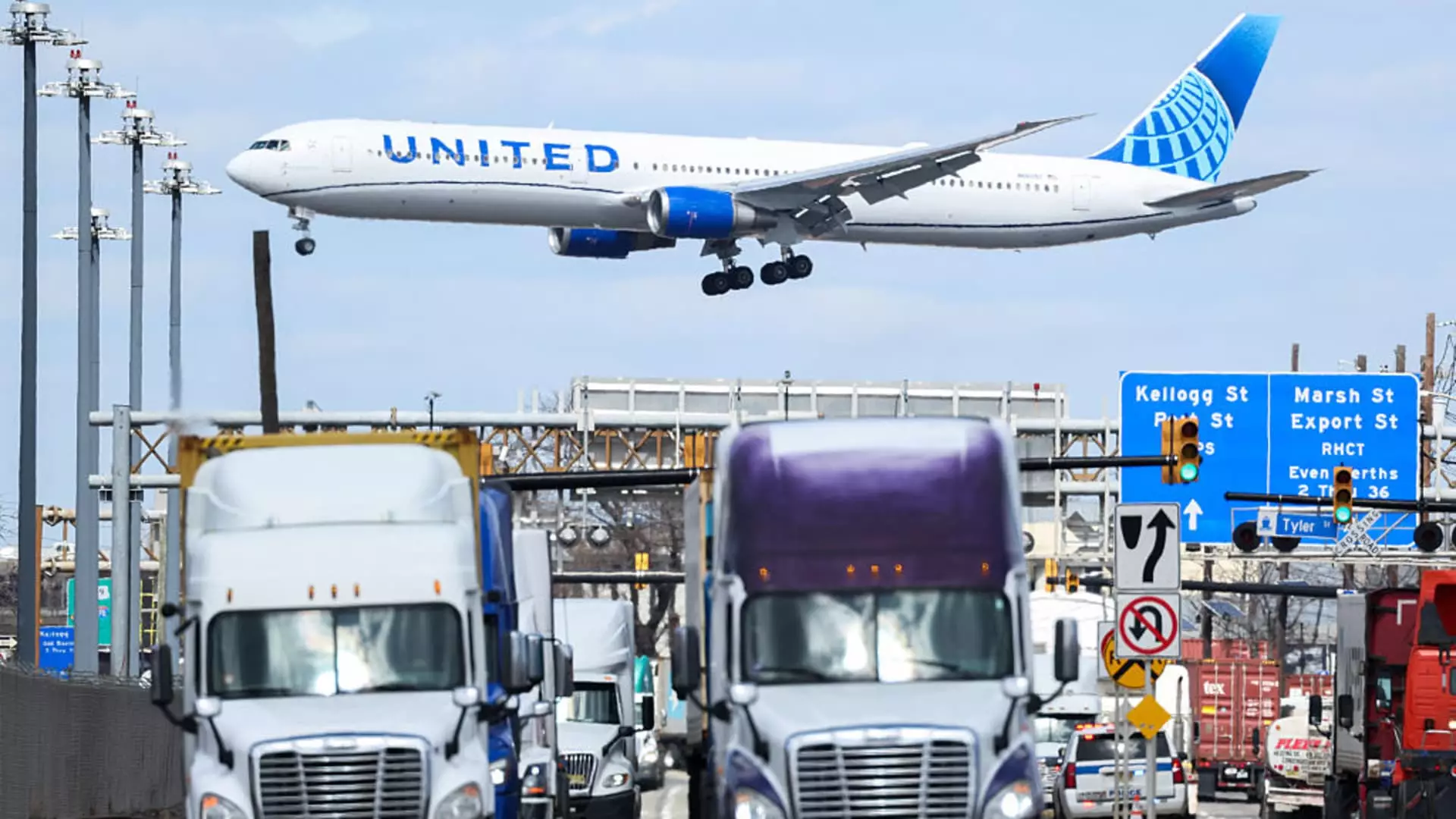In the face of economic uncertainty, United Airlines has taken a bold stance by maintaining its full-year profit forecast while also presenting an alternative outlook that suggests caution if the U.S. slides into recession. This dual-position strategy is not just an indication of confidence; it’s a reflection of the volatile environment that American businesses face in 2023. Every day, the economic landscape shifts, influenced by a mix of international turbulence, domestic policy changes, and consumer behavior. Despite these headwinds, United appears to be navigating these turbulent skies with a steady hand, asserting that they expect to turn a profit regardless of the economic climate. Yet, one must ask: is such optimism justified?
Flight Adjustments and Market Realities
United’s decision to cut domestic flights by approximately 4% starting this summer is a clear signal of their awareness of the current market dynamics. While domestic travel demand has faltered, bookings for international trips remain robust. This dichotomy reveals critical insights into consumer behavior, suggesting that travelers are willing to invest in premium experiences even as their overall spending might be curtailed by a potential economic downturn. By proactively reducing flight capacity, United not only manages costs but also adjusts its offerings to match current market demand. This is a savvy business maneuver, emphasizing the need for airlines to be agile in their operations.
Strong Financials amidst Uncertain Forecasts
Despite the worries surrounding potential recession-related profit declines, United Airlines reported a commendable $387 million profit in the first quarter, showcasing a remarkable turnaround from a loss the previous year. Such financial strength hints at an organization ready to face external pressures with resilience. The adjusted earnings per share of 91 cents exceeded expectations, which is a significant indicator of the airline’s operational efficiency. Investors and analysts alike should take note; while uncertainty looms, United’s ability to generate profits positions it favorably compared to many competitors, most notably Delta Air Lines, which recently expressed its inability to reaffirm its full-year outlook. This contrast paints a picture of an airline that embraces challenges rather than retreats, suggesting a robust strategic vision aligning with center-right principles of economic pragmatism.
Consumer Trends: A Shift Towards Premium Offerings
What stands out most in United’s current approach is the substantial growth in premium-cabin bookings, which surged by 17% over the last year. This trend reflects a broader consumer shift towards valuing experience over cost. It seems many travelers are increasingly willing to spend more for comfort and exclusivity, particularly in the context of international trips. This penchant for higher-end products speaks volumes about consumer sentiment and market trends, indicating that despite worries about the economy, certain segments remain buoyant. This insight requires businesses to adapt and innovate continually, providing offerings that meet the changing preferences of their clientele.
Challenges on the Horizon
While United’s performance thus far is commendable, it recognizes the fragility of the current economic situation. The airline’s admission that its outlook depends predominantly on unpredictable macroeconomic factors is a salient reminder of the uncertainties that lie ahead. However, the need for prudent forecasting cannot overshadow the significance of an airline maintaining its profitability even amid adversity. United has set boundaries in its expectations, offering a cautious yet realistic view on potential earnings in a recession scenario. In doing so, it underscores the necessity for strategic risk management in volatile markets.
A Silver Lining in Unpredictability
United Airlines exemplifies a pragmatic blend of caution and ambition as it faces the realities of an unstable economic environment. By adapting to shifting consumer preferences, strategically reducing capacity, and continuing to forecast profit even amidst potential downturns, United is positioning itself not just to survive but to thrive in the face of adversity. The airline industry is notorious for its volatility, but United’s current trajectory reveals the importance of strategic foresight, responsive operations, and an unwavering commitment to its core objectives. In these unpredictable times, where many businesses may falter, United’s resilience could herald a new era of strategic excellence.


Leave a Reply